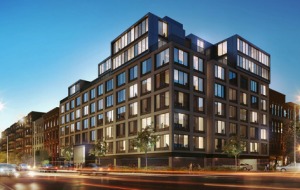Op-Ed: Pro-Development Message Downplays Gentrification Threat

It all started when we ran a story about Fort Greene and Clinton Hill residents who opposed a bike lane. Pro-development writer Dan Miller then called us out for not being forceful enough in advocating for high-density development. Well, now Rico Cleffi is calling out Miller. Let the debate continue!

Dan Miller is right to call out the hypocrisy of anti-bike-lane homeowners who have seemingly lost their minds over a perceived “war on cars.” Unfortunately, he uses this bad example to promote his pro-development group Open New York’s narrow development agenda.
The type of housing Miller is talking about wouldn’t be remotely affordable for most people in a city where 70 percent of households earn less than $59,000 a year.
Open New York advocates don’t support the usual fixes to the housing crisis pursued by most tenant groups, like rent regulation, or just-cause eviction measures. In line with their “Yes in My Backyard” (YIMBY) ideology, they push free-market remedies catering to the richest among us, under the assumption that expensive housing will eventually “filter” down to the point where prices significantly decrease. For all the rhetoric against rich homeowners, it’s a policy that offers nothing for low-income people or working households struggling to stay out of poverty.
Miller says objections to his ideology are “bullshit.” It sounds as if he wasn’t around to witness the Atlantic Yards debacle. Anyone who can’t understand why Brooklyn residents could be wary of increased high-end development should check out Norman Oder’s encyclopedic chronicling of that boondoggle on the Atlantic Yards Report. Those who lived through the racket know the outright lies by the developer and City Planning, the seizing of land via eminent domain, hundreds of millions in tax giveaways and subsidies, a cast of shady oligarchs, the eventual flipping of the project to a Chinese-government-owned firm. And the clincher, the promised “affordable housing” is geared toward people with six-figure incomes (the project has been unable to find tenants for many of these apartments — there just isn’t enough demand for expensive studios).
“Of course,” Miller tells us, “the key question is: Where to put all the new housing? Ideally, neighborhoods such as Prospect Heights or Fort Greene,” neighborhoods, that Miller thinks are “already wealthy.”
Open New York claims to only push its policies in rich neighborhoods where displacement risks are minimal. According to Census data, median household income for Fort Greene is $64,573. About 43 percent of the neighborhood’s households earn less than $50,000. The number of poor residents hardly points to a “wealthy” neighborhood — 16 percent of households, 25 percent of Fort Greene’s children, and 24 percent of adults over 65 all live below the poverty line. Home and apartment owners only account for about 25 percent of households.
There’s also another problematic angle to all this: Fort Greene is still 39 percent black and 18 percent Latino (compared to about 29 percent white). Prospect Heights has a growing white population (about 50 percent), but is still 35 percent black and Latino. It is also not as affluent as Miller seems to think; its median household income is about 50 percent higher than Fort Greene, but 11 percent of kids and 13 percent of seniors still live below the poverty line.
Prospect Heights is a tricky neighborhood to look at in this regard, since there has always been a huge income discrepancy between the parts of the neighborhood situated closer to Park Slope, and the areas abutting Crown Heights. Neither of these neighborhoods is the West Village. (Note: my stats deliberately exclude the usual census data, which factor in the surrounding area of North Crown Heights. If you include those areas, the neighborhood is far less white, and much lower income.)
It’s easy to look only at rich newcomers in a historically black neighborhood like Fort Greene, or to see Prospect Heights for its brownstones, while excluding all the blocks that don’t fit into the narrative. The poor (working and otherwise) in these neighborhoods are at the highest risk of displacement. Ignoring their presence while pushing housing policies that will hurt them most says a lot about YIMBY politics.
The larger point is, who gets to make these crucial decisions involving neighborhood development and housing?
YIMBYs love “density,” and throw the term around like a panacea to cure the environmental and housing crises. Miller’s piece reflected a different kind of density — an inability to understand that maybe policy decisions for diverse, complex neighborhoods shouldn’t be dictated by a group that consists almost exclusively of white, upper middle class, recent transplants. And it bears mentioning that key Open NY members own a real estate firm that stands to benefit handsomely from the policies the group promotes.
I have bike commuted in this town for two full decades, and my wife and child commute to school via bike. I support bike lanes and homeless shelters. I reject the narrow thinking that carves the world into NIMBY/YIMBY. Transit activists interested in connecting with housing initiatives would be well served to check out the Upstate/Downstate Alliance, or any of the other groups fighting to strengthen rent regulations. We need more fully affordable housing, not expensive apartments out of reach for about 80 percent of the population. There are plenty of good options without embracing a free-market, trickle-down housing ideology like the one peddled by Open New York.
Rico Cleffi is a writer/researcher, and bike commuter living in Brooklyn. He is on Twitter as @rcleffi